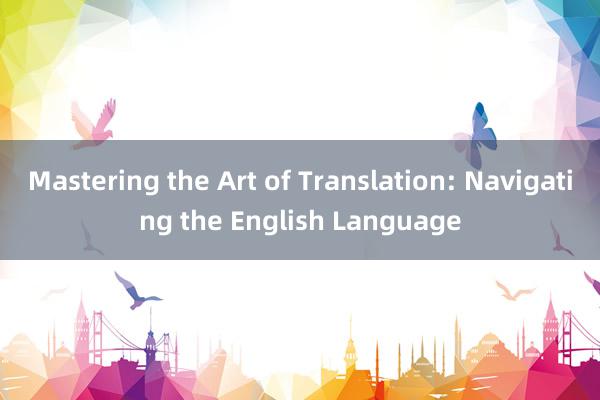
### Mastering the Art of Translation: Navigating the English Language
Translation is not merely about converting words from one language to another; it's an art that requires a deep understanding of both languages and cultures, along with a keen sense of nuance and context. When navigating the English language specifically, several key aspects come into play that distinguish successful translations from mere word-for-word equivalents.
#### Understanding English Grammar and Syntax
The first step in mastering translation involves a thorough grasp of English grammar and syntax. Unlike many languages that follow a rigid subject-verb-object (SVO) structure, English can be more flexible, often placing the object before the verb or using prepositions in ways that might seem complex at first glance. Understanding these nuances allows translators to maintain the original structure when necessary, ensuring that the translated text flows naturally in the target language.
#### Cultural Sensitivity
Language is deeply intertwined with culture, and this connection becomes particularly evident in English. Phrases, idioms, and colloquial expressions often carry cultural meanings that may not translate directly. A skilled translator must be sensitive to these cultural references, sometimes finding ways to convey the same message through culturally appropriate analogies or explanations within the target language.
#### Capturing Tone and Style
English, like any language, 企业-维丰领棉类有限公司 has a variety of tones and styles, 河北拓华金属制品有限公司 from formal to informal,星成有限公司 technical to poetic. Translators must be able to discern and replicate these tones accurately. This requires not only a deep understanding of the source text but also the ability to adapt the style to suit the audience and context of the target text. Whether the goal is to maintain formality for legal documents or to capture the humor and rhythm of a poem, the translator's skill lies in their ability to navigate these stylistic landscapes.
#### Utilizing Technology and Resources
In the era of digital communication, translation tools and resources have become indispensable. Software like translation memory systems,武汉信利和合有限公司 terminology databases, and machine translation engines can greatly enhance efficiency and accuracy. However, they should be used judiciously, as they cannot replace human judgment entirely. Translators must know how to leverage these tools effectively while also applying critical thinking to ensure that the output respects the complexities of human language.
#### Continuous Learning and Adaptation
Finally, the art of translation is one that thrives on continuous learning and adaptation. The English language evolves rapidly, influenced by globalization, technology, and social changes. Translators must stay informed about linguistic developments and cultural shifts to keep their translations relevant and impactful. Engaging with diverse texts, attending workshops, and collaborating with peers are all essential parts of this ongoing journey.
In conclusion, mastering the art of translating the English language involves a blend of technical expertise, cultural awareness, stylistic finesse, and a commitment to lifelong learning. It's a craft that requires patience, precision武汉信利和合有限公司, and a deep appreciation for the beauty and complexity of language itself.